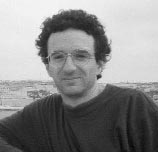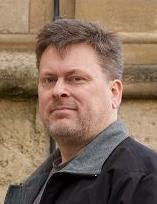 The arguments presented in my recent series of posts on dualism have been more or less ecumenical. That is to say, they have not attempted to defend any particular form of dualism, but merely tried to show that the mind must be immaterial, leaving open the question of how exactly the immaterial mind relates to the material side of human nature.
The arguments presented in my recent series of posts on dualism have been more or less ecumenical. That is to say, they have not attempted to defend any particular form of dualism, but merely tried to show that the mind must be immaterial, leaving open the question of how exactly the immaterial mind relates to the material side of human nature.But as readers of The Last Superstition and Philosophy of Mind know, I do not in fact think that all forms of dualism are equally defensible. The version I would myself defend is neither Cartesian substance dualism, nor property dualism, nor emergent dualism, but rather hylemorphic dualism, so called because it is informed by hylemorphism, the Aristotelian-Thomistic-Scholastic view that material substances are composites of form and matter. (The theory is also sometimes called Thomistic dualism, after Thomas Aquinas, its most significant advocate historically.)
David S. Oderberg (who seems to have invented the label "hylemorphic dualism") is among the view's most skilled contemporary defenders. His 2005 article "Hylemorphic dualism" is must reading for those interested in the subject, and he has recently published another important article entitled "Concepts, dualism, and the human intellect," which is available here. Check it out.
Incidentally, anyone who wants to see what a rigorous and detailed contemporary defense of Aristotelian-Thomistic metaphysics would look like should invest in Oderberg's brilliant recent book Real Essentialism.

Your book just arrived and I can't wait to get into it. Just glancing through some of the pages there were more than a few LOL assessments of the New Atheists'...peculiar approach to researching. So I know I'm in for a good read.
ReplyDeleteThanks John! Hope you enjoy it...
ReplyDeleteHi again Professor Feser. I have a question concerning this article. What exactly is the difference between "property dualism" and "emergent dualism," as you seem to separate them? Aren't both of these the notion that mental states arise from physical states, but are not reducible to them?
ReplyDeleteHello Chen-song,
ReplyDeleteYou could say that the emergent vs. non-emergent distinction is one that cuts across the substance vs. property distinction. The debate between substance dualism and property dualism is over what sort of thing it is which is immaterial. The debate between emergent dualism and non-emergent forms of dualism is a debate over how this immaterial thing (whether a substance or a property) comes into being and/or is related to the material world. So, as you suggest, not all versions of these views are necessarily incompatible with one another.
My point was just that Thomistic dualism not only denies that the soul is a distinct substance and that it is merely a set of distinct properties, but also denies that it is an "emergent" feature of sufficienty complex material systems. (To be sure, some have suggested that Thomistic dualism is a kind of emergentist theory, but that is a mistake, and fails to take account of how different a hylomorphic account of matter is from the "mechanistic" one presupposed both by materialism and by post-Cartesian forms of dualism.)
This comment has been removed by the author.
ReplyDeleteIs it not possible recast Modern Physics into Hylemorphic dualistic terms?
ReplyDeleteConsider an electon-might not its substantial form be its tendency to interact via electromagnetic interaction?
Or is it possible to consider the ordinary gravititational interaction of a mass as its Final Cause?.
Professor Feser, do you consider panexperientialism to be compatible with hylomorphism/hylemorphism? There seem to be some base similarities between the views.
ReplyDeleteSome base similarities?
ReplyDeleteLike what?
Surely not that hylomorphism takes form to be a feature of every thing and also explains the mind in formal terms. Panexperientialism takes experience to be a feature of every thing. How does that constitute an interesting similarity?
Incorrect. It takes the potential for mentality to exist in all things, based on the principle that physical causes alone cannot give rise to mental phenomena. There is a stronger version of it though. It shares the premises of nonreductionism and as far as I can tell nonemergentism with hylemorphism.
ReplyDeleteHello Gyan,
ReplyDeleteModern physics can indeed be understood in Aristotelian hylemorphic terms, but the "dualist" part applies only to human beings, since only human beings, and neither other living things nor inorganic substances, have subsistent forms (i.e. forms capable of continuing in existence beyond the destruction of the body the form is a form of). The reason is that, from an Aristotelian-Thomistic point of view, human beings, unlike other material things, carry out some functions that are immaterial, namely thinking and willing.
Hello Inquisitor,
Because there is a family resemblance between final causality and what modern philosophers call intentionality, I can see why you might wonder whether there is a similarity between the views. Still, for Aristotelians and Thomists, the final causality that exists in plants and in the inorganic world is totally unconscious. And this would rule out a panexperientialist interpretation.
A major corroboration of hylomorphic dualism is that the physical universe is nothing but the Unified Field, within which as extremely minor perturbations are nucleons stochastically vibrating at 10^26 sec-1 and electrons at 10^23. (Scaling the electron's Compton frequency to one sec-1 makes a nanosecond into a million years, for nucleons a billion. Imagine enduring a thousand years of vigorous jostling by monstrous surf slightly perturbed by the feathery touch we call the nuclear force. Gravity's seeming mightiness is laughably insignificant.)
ReplyDeleteFundamental particles are extremely minor relative to the hugely energetic unified Field-waves bombarding them. Compared to the Planck-scale vibrations of the Field, they are impossibly hard to find in space-frequency phase space, since they are extremely rare, extremely minor solitons of the Field. In turn, the four 'known' forces that these particles 'feel' are mere shadows compared to their primary Compton-frequency vibrations.
With all frequencies, times, and places being totally equivalent, and with no preferred scale, the vastly energetic, nearly totally stochastic Field is a Cosmic Ocean with an insignificant 'surface froth' that we call the trillion-year history of Universe. All of the phenomena studied by science are actually of the Forms (i.e., meaningful configurations) taken by huge populations of these particles, which are themselves Forms of the Field. Without these Forms, matter is nothing but the physical reality of those high-speed (1^46 sec-1) Field vibrations.
Without specifying a present time and a particular scale, there is no way to find anything but meaningless randomness in the stochastic vibrations of Field-waves, because there is no guidance to find macroscopic phenomena, as they are totally buried somewhere within a huge number of decimal places of Field values, impossible to find at the Planck scale.
Meaning, the essence of Form, is the foundation of causality. Only minds can appreciate meaning, specifically because minds (which occur only in biological bodies) inhabit a particular place at a particular moment, at a particular scale of space and time. This fundamental fact makes hylomorphic dualism a shoe-in.
The frantically dogmatic 'materialism' of modern science deliberately overlooks the perception-dependence (Berkeley, anyone?) of their so-called matter, actually comprised of the numerous Forms adopted by a huge population of fundamental particles. The particles themselves are, in turn, Forms as well.
Nothing is more threadbare and useless than physics without physicists, or 'matter' without Form. (Imagine if you could tell Aristotle about the Field.)
Happy Solstice
(Did you watch sunrise or sunset today? They will be at the same times only tomorrow, straddling the 12UT solstice moment.)
Thank you, Professor Edward Feser, for your beautiful and valuable articles and books. I have been always searching for answers. I am interested in knowing how we can reformulate the hylemorphic theory in terms of modern atomic and quantum physics.
ReplyDeleteThank you!
Dr.Ivo da Conceiçao Souza
(Holy Spirit Church, Margao, Goa 403601, India)